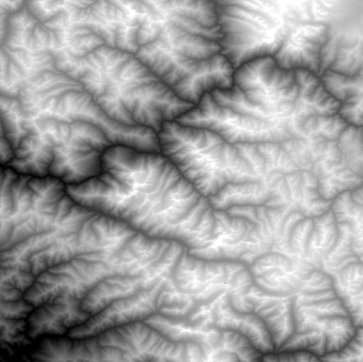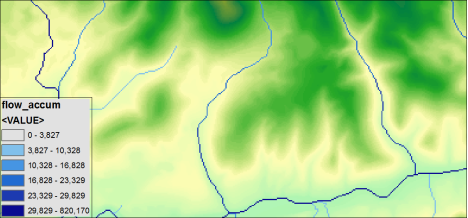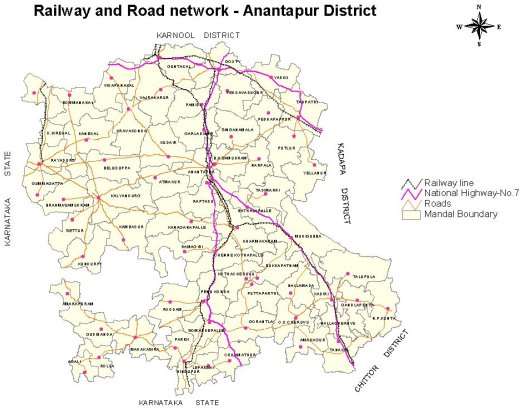Ecologically Compatible Land Use Planning Methods
| ✅ Paper Type: Free Essay | ✅ Subject: Geography |
| ✅ Wordcount: 1722 words | ✅ Published: 23rd Nov 2017 |
Methodology
For the purpose of ecologically compatible land use planning multiple GIS functions has been carried out. The functions carried out are integration using the model builder tool in order to come to the final results.
Model Builder
Model builder is an application in ArcGIS which is used for creating a model for a particular function. These models can be reedited even at later stage of analysis which makes it suitable for modifications if required thus making the work faster and results more accurate. (ESRI, n.d.)
Get Help With Your Essay
If you need assistance with writing your essay, our professional essay writing service is here to help!
Find out more about our Essay Writing Service
To create a model a toolbox needs to be created first. After creating a toolbox in a specific folder connection a model can be created within the toolbox. A model looks like a workflow diagram through which various geo-processing tools are connected. The output of a particular function can be used as the input for the next. By using this method the multiple analysis can be one at the same time. While using GIS during some analysis the files might get heavy and display of the output might take a long time and can even result in crashing of the system. But while using model builder we have an option for displaying only the required.
Model builder is generally used when we require a large number of parameter to come results or when multiple steps are required to come to a result. In real time application we use for analysis like land suitability, hydrology, etc. In addition to all these advantage it helps the user get a visual relationship between different parameters and makes it easier to explain to a third person on how the analysis is performed thus making this one the most advanced tools in the field of GIS.
Locating the villages and defining the ESZ boundary
Before using the model builder multiple layers need to be created and analysis need to be performed. The first task is the marking of boundary and locating the villages that comes under ESZ. In this study there are 88 villages. These location are marked by first locating the villages using the Google Earth with the latitude and longitude given by the MoEF. These are then saved as Keyhole Mark-up Language (KML). (KML) is an XML-based mark-up language designed to annotate and overlay visualizations on various two-dimensional, Web-based online maps or three-dimensional Earth browsers. (Rouse, n.d.)
Since all the village kml files are different and this has to be converted to shapefile as a single one. This is done by using the Expert GPS software which converts and combines as a single shapefile.
The boundary of ESZ created by using polygon feature. A new shapefile (polygon feature) is created by using ArcCatalog inside the folder connection. Type of shapefile is chosen and title is given to the shapefile. The next step includes the defining the coordinate system for the location. In case of this location the coordinated defined as Projected Coordinate System > UTM > WGS 1984 > Northern Hemisphere > WGS 1984 UTM Zone 43N.
Digital Elevation Model (DEM) and DEM Masking
A Digital Elevation Model is the representation of continuous elevation values over a topographic surface by a regular array of z-values, referenced to a common datum. (ESRI, n.d.)

Digital Elevation Model
The DEM used for this study is of 90 meter resolution and is obtained from asterdem. In case of this study four DEMs were required in order to cover the complete area. Later this were combined and masked using ArcGIS masking tool with reference to the boundary created.
Masking is used for extracting the required part of raster file with the reference of a feature class. Masking tool is found in the ArcToolbox under Spatial Analyst Tools > Extraction > Extract by Mask. Once this process is done the output is

DEM after Masking
This masked DEM is going to be used multiple analysis like slope, elevation, TIN model, flow accumulation, hillshade, etc.
Slope Analysis
The slope or gradient of a line is a number that describes both the direction and the steepness of the line.

The Slope tool calculates the maximum change in value from that cell to its neighbours. Basically, the maximum change in elevation by the distance between the cell and its eight neighbours finds the steepest downhill descent from the cell.
The tool fits a plane to the z-values of a 3 x 3 cell neighbourhood around the processing or center cell. The direction the plane faces is the aspect for the processing cell. The lower the slope value means flatter terrain and vice versa.
The cell location with a NoData z-value, the z-value of the center cell will be assigned to the location. (ESRI, n.d.)
Aspect Map
Aspect map shows the direction and steepness of slope for a terrain. Aspect tool is under spatial analyst and is created using DEM. The areas that have steeper slopes are shown brighter. The aspect map is classified on the basis of direction of slope in degrees (0-360°).
0-22.5: North
22.5-67.5: North-east
67.5-112.5: East
112.5-157.5: South-east
157.5-202.5: South
202.5-247.5: South-west
247.5-292.5: West
292.5-337.5: North-west
337.5-359.5: North
Whichever locations are flat is assigned (-1).
Hillshade
Hillshade is a 3D grayscale model of a surface by taking sun’s relative position to account. It shows the areas that receives sun light and that comes under the shade at a particular time. For this function the azimuth and altitude of location is required.
The inputs for this function are the following:
- Input DEM
- Azimuth
- Altitude
- Scaling
- Z Factor
- Pixel Size Power
- Pixel Size Factor
Altitude is the angle of elevation of sun (0-90°) and azimuth is the relation position of sun along the horizon (0-360°). Z-factor is the elevation of the location.
The Hillshade tool comes under spatial analyst toolbox in ArcGIS.
TIN Model
Triangulated Irregular Network (TIN) model is a digital data structure used in GIS for representation of a surface. TIN model is generated using DEM. Advantage of TIN over DEM is that points of TIN are distribute variably by using an algorithm that decides which points are more accurate for terrain representation.

TIN (Scientific Software Group, n.d.)
Contour Map
Contours are lines that connects the points of same values. The contour model is used for study of elevation, temperature, precipitation, pollution, etc. In this study contour map is used for the analysing the elevation details. This helps in finding the areas that have less steep slopes and can be developed.

Contour Map (OpenGeo Suite, n.d.)
Contour map over the TIN elevation model will help is visualizing the terrains in a better manner.
Flow Accumulation
Flow accumulation map shows the areas that will accumulate water. In ArcGIS a raster file is created of accumulated flow into each cell. Flow direction is used as the input for flow accumulation raster. Flow accumulation comes under hydrology tool which is under spatial analyst toolbox.
Usage:
- Cell with high flow accumulation can be used to identify stream channel.
- Cell with flow accumulation of zero can be used to identify ridges.

Flow Accumulation Map (Stack Exchange, 2012)
Basins
This tool creates a raster that delineates all the drainage basins. The drainage basins are delineating ridge lines between basins. For creating the basins, the flow direction is used as the input. Even if the basin is in one cell, all the cells in a raster will belong to a basin.

Basin Map (National Water Program, 2013)
Road Network
Road network are created using polyline feature. For this study since the area being large only the major road are mapped. Further buffers will be created in order to do the proximity analysis to find the locations that are suitable for development.

Road Network Map (Anantapuramu District, n.d.)
Landuse Map
Landuse map is required to understand for what purpose different areas put into use. Land use map is a polygon feature. It is created using the cut polygon tool in ArcGIS. Since the area being large, in this study landuse map is prepared at a macro level.

Landuse Map Delhi, 2004 (Netzband & Atiqur, 2007)
Cite This Work
To export a reference to this article please select a referencing stye below:
Related Services
View allDMCA / Removal Request
If you are the original writer of this essay and no longer wish to have your work published on UKEssays.com then please click the following link to email our support team::
Request essay removal


